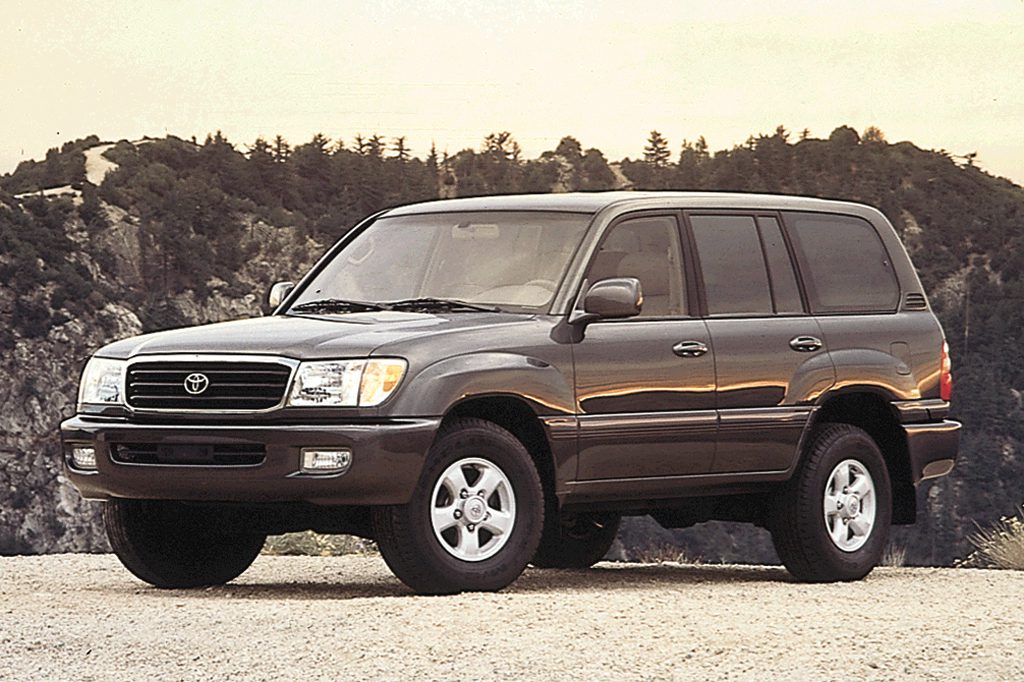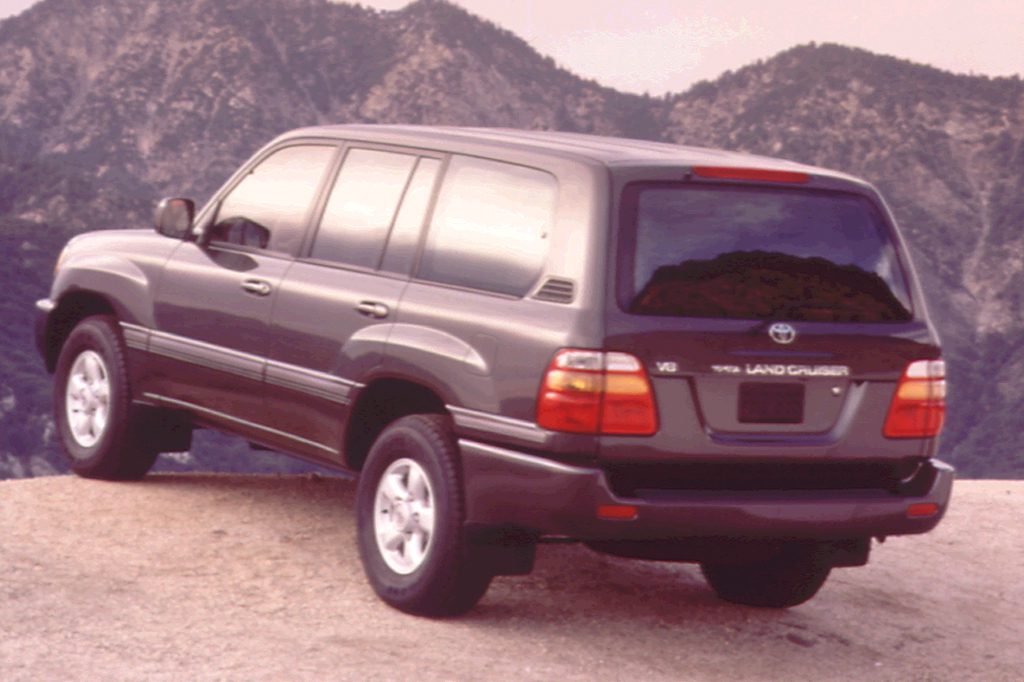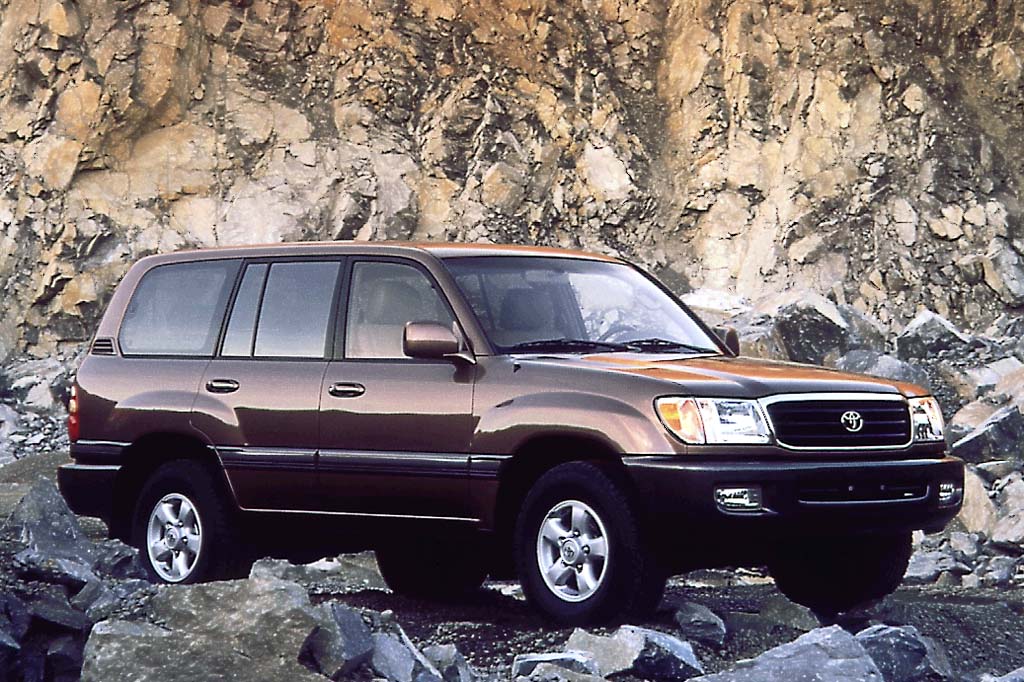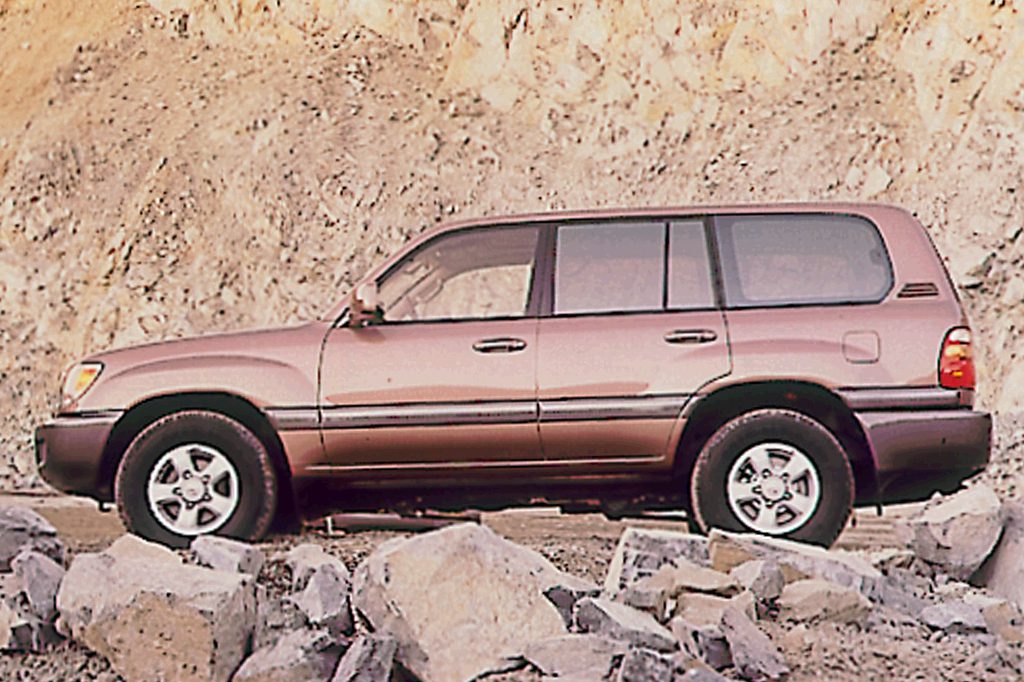| Premium large SUV; Built in Japan |
|
|
| Good condition price range: $9,000 – $32,500* |

1999 Toyota Land Cruiser

1998 Toyota Land Cruiser

1998 Toyota Land Cruiser interior

2000 Toyota Land Cruiser

1998 Toyota Land Cruiser
| Pros: |
|
| Cons: |
|
Though less expensive than its Lexus mate, Land Cruiser is not cheap and has less space than some less-costly rivals. Nevertheless, it’s highly capable off-road, and as fast and comfortable as any competitor on the road. Built better than most, Land Cruiser delivers.
Overview
Toyota’s full-size sport-utility vehicle earned new styling for 1998, as did its Lexus cousin. That upscale Lexus wagon got a name change from LX 450 to LX 470, to mark the switch from V6 power to the SUV’s first-ever V8 engine (with 4.7-liter displacement). Toyota stuck with the Land Cruiser designation for its new V8 sport utility. The V8 evolved from the engine installed in Toyota’s Lexus-division luxury cars. The 4-door wagon came with permanent 4-wheel drive and a 4-speed automatic transmission. A 2-speed transfer case provided low-range gearing for off-road use, and a locking rear differential was optional. A Land Cruiser could tow up to 6500 pounds. Antilock brakes were standard. Land Cruisers were fitted for 5-passenger seating as standard, but a 3-place third-row bench seat was optional, boosting capacity to eight occupants. Rivals included the Chevrolet Tahoe, Ford Expedition, and GMC Yukon/Denali.
Yearly Updates
| 1999 Land Cruiser Rear air conditioning became optional this year, as the only notable change. Featuring automatic temperature control, that system was independent of the front-seat air conditioner. Rear air was available only when ordering the third-seat option. |
| 2000 Land Cruiser Land Cruisers gained standard equipment, including a new Active TRAC traction control system with integrated vehicle skid control. Using data from the 4-wheel antilock brake sensors and other sources, this system directed power to the wheels with best traction. Formerly optional, a power moonroof and leather upholstery became standard. Automatic rear air conditioning, independent of the regular system, now came with the optional third-row bench seat. |
| 2001 Land Cruiser An optional navigation system featuring an in-dash screen with map display via DVD was new for 2001. |
| 2002 Land Cruiser Toyota’s luxury SUV got standard instead of optional 3rd-row seating, plus rear-seat automatic climate control for 2002. |
| 2003 Land Cruiser Side airbags were a new option, a 5-speed automatic replaced the 4-speed, and the V8 got an additional 5 horsepower. |
| 2004 Land Cruiser An optional rearview TV camera is the only 2004 addition to the Land Cruiser. |
| 2005 Land Cruiser Standard wheel size increases from 17 inches to 18 as the only 2005 change to Land Cruiser. |
| 2006 Land Cruiser No new changes for 2006. |
| 2007 Land Cruiser Land Cruiser carries over unchanged. |
